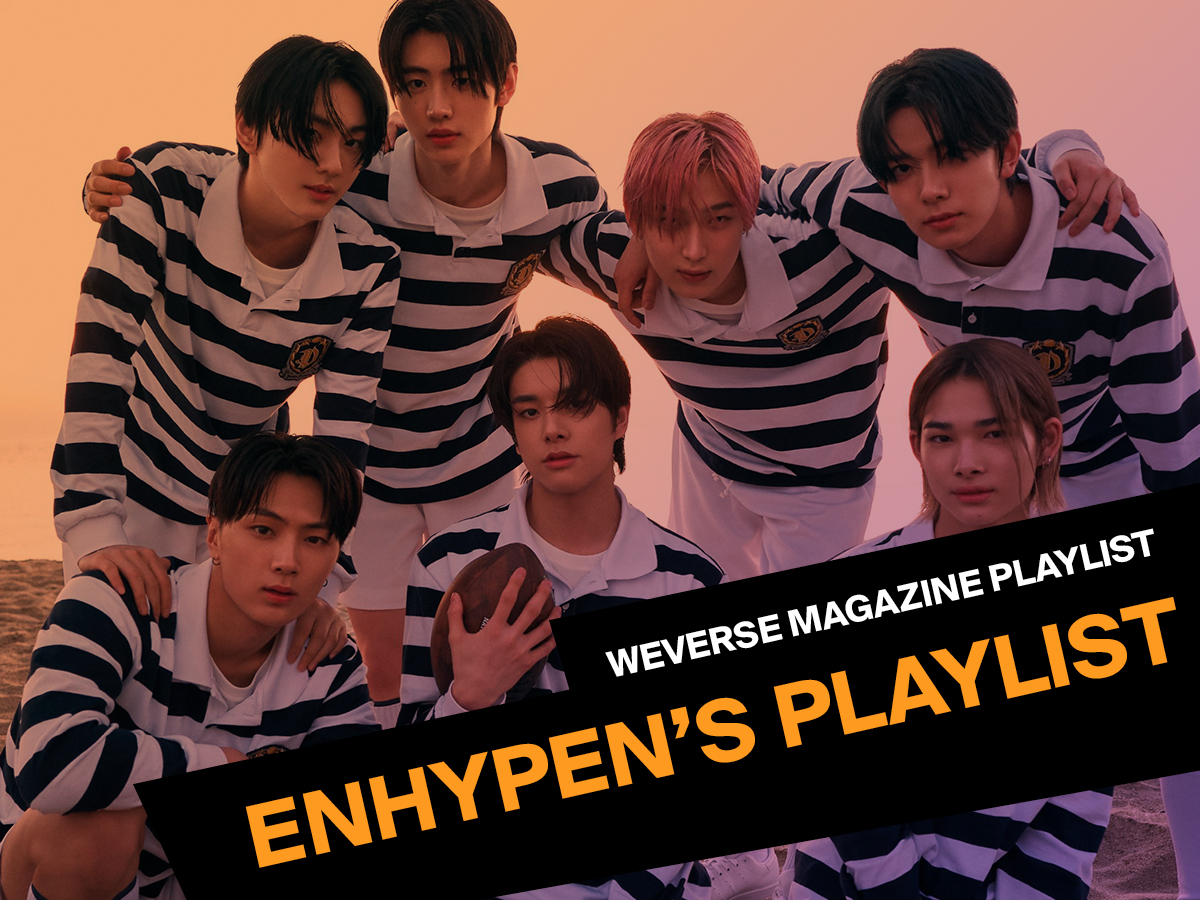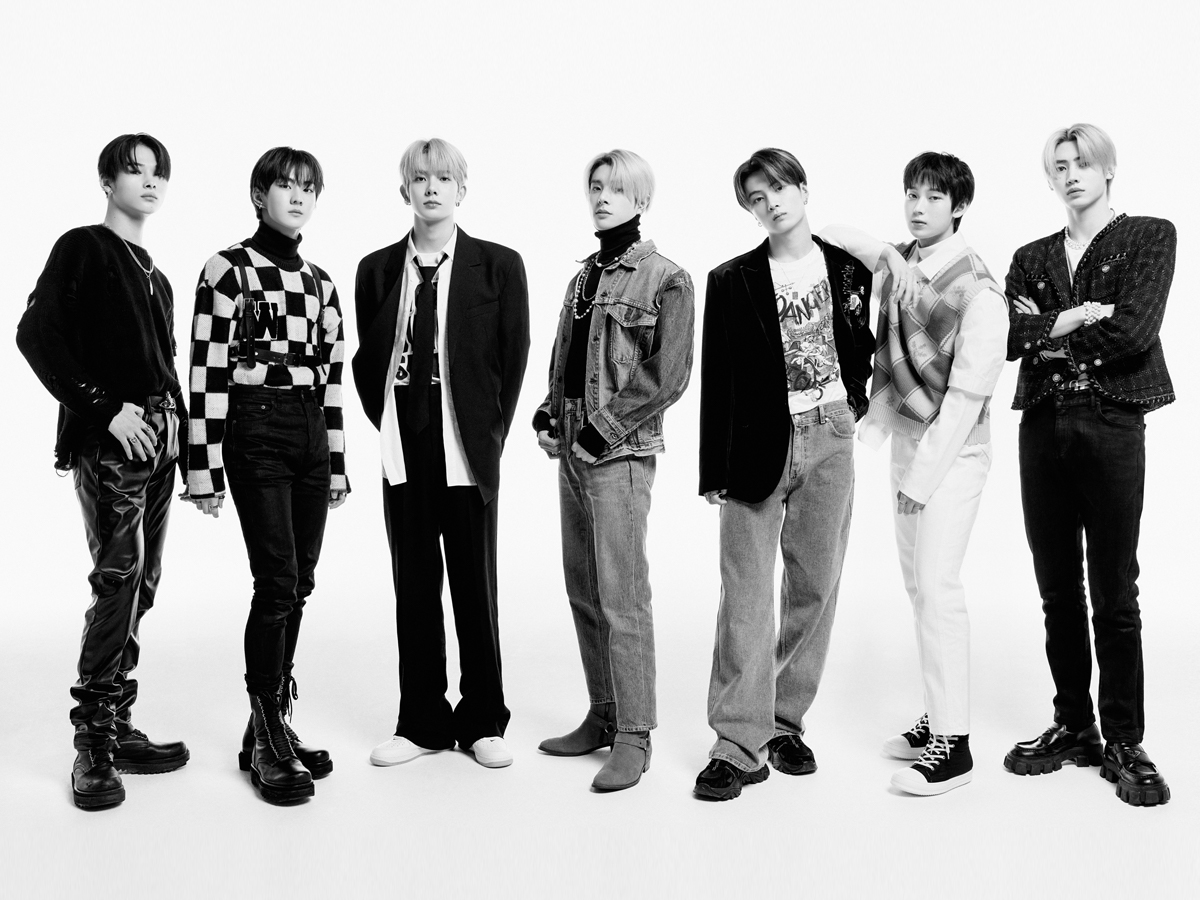I’m listening to “Polaroid Love” a lot these days. It’s easygoing, so it suits the mood all throughout my day-to-day life. Like the student with the gentle, carefree expression who sits in the first row. That’s the kind of picture the song paints: no passionate or thrilling moment, but rather, a brief image of an inexperienced young heart trying and failing to deny its feelings; in other words, a love song befitting 2022, where the feelings of “puppy love” are likened to an instant photo. And thanks to one fan’s viral TikTok, the dance challenge is all the rage, too.
The song’s in a major key, but buried inside is some nuance of minor-like melancholy. The Cm7 - F7 - Bbmaj7 - Gm7 (ii - V - I - vi) chord progression repeats throughout the song, a structure that takes a common jazz progression (ii - V - I) and adds a minor vi flourish in the final measure. The keyboard playfully bounces between the left and right hands but the young singer behind the lyrics brushes love off as an “old-fashioned emotion.”
The introduction (and the chorus) sums the theme of the song up in four short, bittersweet words. JAKE’s unique pronunciation style also plays a part in piquing the listener’s interest. He pronounces consonant sounds that play off the palate, like ch-, g- and j-, in a tender way, and leaves his vowels airy as not to rattle loaded lyrics like “sarang chonseureoun geu gamjeong” (“love, that old-fashioned emotion”), making them a highlight instead.
The first verse portrays the speaker as being a so-called tsundere, or slow-to-warm, personality. There’s a contrast between the way JAY curtly and chicly resolves the first verse and the somewhat sweeter way in which SUNGHOON sings in sequence. The speaker sees love as old-fashioned and predictable—something too obvious to be bothered with. His awareness of love has less to do with the excitement during but more with the pain of having to deal with the fallout after everything breaks down. This is the situation facing not only teenagers but virtually everyone in this highly competitive era, and the song holds up a mirror to a society that makes all people, even the young, feel this way, exposing just how stifling it can be. The idea that love could lead to bitterness at the end of an emotional connection or relationship or cause them to fall behind on all their responsibilities and have to deal with the consequences alone makes them hesitant about experiencing anything exciting or, like the character in the song, wildly underestimate love’s value and avoid it altogether.
Then, in the pre-chorus, the speaker feels their heart race when someone else calls their name. This unknown delight is expressed through temporarily changing the minor chord (vi, Gm) at the end of the ii - V - I - vi progression to major (VI, G). The word “name,” when HEESEUNG sings “when you call my name” in his soft, pop voice, falls on a chord known as a Picardy third. SUNOO picks up on this overwhelming feeling, singing first from his chest then crossing over to a falsetto as he sings about his “achingly” beating heart. The song is ostensibly sweet and playful, but this adds a dash of bitterness. The rhythm sticks to a monotonous beat throughout the verse and pre-chorus, then all the instruments fall away at the words, “my heart pounds, pounds,” before the pop drum kicks in, but it isn’t overpowering—just enough to add a little more excitement. The simple, typical structure makes the track comforting the way old songs are. It’s like a little ornament added in for the repackaged album. In the K-pop scene, where songs tend to be complex and sensational, it seems to stand out all the more for that reason.
I was curious how young listeners feel about this song, so I went looking. They used words like “cute,” “sweet,” “relatable” and “dreamy.” But that last one was the one that stood out most. After thinking more about what that meant, I came to realize it’s referring to the dreaminess that comes from everything in the production, like the electric piano—a lo-fi-staple—that gives the song its retro feel. Nowadays, everything is high quality and in high definition. People who are older feel a sense of nostalgia from low-quality, low-definition recordings, but the younger generations who never experienced the days of low fidelity won’t feel the same sense of categorically directed longing. Young people might instead interpret this as feeling dreamy and in some way separated from reality, where everything is ultra-clear and overflowing with data.
The first Polaroid camera was made available in 1948. (Polaroid is the name of the company that first produced instant cameras, but it’s the most commonly used term for instant cameras in general, so the word is used that way throughout this article.) Naturally, it was the latest and greatest in technology at the time it was released. Unlike ordinary film cameras, whose pictures had to be taken to a darkroom and developed, Polaroid cameras allowed people to see their photos immediately after taking them, making them a paradigm-shifting innovation. While instant cameras were in widespread use during the late 20th century, they gradually faded out of popularity as digital cameras rose to prominence after the year 2000. Not only did digital cameras allow people to see images immediately, but they were now also able to select and print only those shots they wanted to, meaning there was no longer a need to buy and use up film as they went. This freedom that digital technology brought—to choose only the desirable parts—rendered physical photo paper a cumbersome relic of the past. Polaroid, the company, even shuttered their instant camera operations in the late 2000s. Around that time, however, Fujifilm, who possessed the same instant photography technology, released their line of Instax cameras. With their playful, rounded edges, the cameras were promoted as more fashionable, fun products. In other words, they chose to appeal to the emotions of those consumers looking for an analog item in a digital world. The strategy was a resounding success: The instant camera returned from the grave to be reborn as a fashion item with a respectable fan following. And now, in 2022, with a revival of 20th-century aesthetic dominating every corner of pop culture, from fashion to music, Polaroids are the epitome of a style that feels at once old-fashioned but uniquely retro.
ENHYPEN’s “Polaroid Love” interacts with this aesthetic as well. That Polaroids are instantaneous is no longer a selling point in an era that’s moved beyond even digital cameras to put a smartphone in nearly every individual’s pocket. Instead, the inability to use filters or correction software means the photos are guaranteed to capture their subjects exactly as they truly are. Unlike when images are represented as bits of information spread infinitely across a digital display and able to be duplicated indefinitely, the physical Polaroid that pops out of a camera is the one and only copy in existence (bearing in mind, of course, that they can be digitized by scanning or snapping, but that’s still not an original). The physical properties of Polaroids are alluded to in the second verse of the song when NI-KI and JUNGWON sing one after the other innocently: “Here, an untouched record of my heart for you / It’s getting clearer / Only one copy of my feelings in the whole world.” In a time when film’s been displaced by digital, what was once thought to be inconvenient is now considered special for the effort it entails. It became something tacky but desirable.
The love in “Polaroid Love” isn’t all sweet and dreamy, though. With the premise being built on concerns about reality, bitter invariably follows on the heels of sweet. ENHYPEN’s other love songs take a similar perspective. “Just a Little Bit,” from the same album, describes someone who thinks they understand everything about the world but begin to change once they fall in love. Although also a love song, this track is closer to a diary, documenting one person’s personal growth and the realization that love is changing who they are, than to a love letter to another person. “Not for Sale,” from the second mini album, tells the story of how someone who once laughed in the face of the materialistic world feels excitement for the first time after meeting someone new and learns the importance of relationships that exist outside of the laws of logic. Songs like “Fever” and “Let Me In (20 CUBE)” take a foolhardier attitude, but they’re all set against the backdrop of fantasy. ENHYPEN’s realistic love songs mostly all share a cynical and cautious outlook toward the world.
It’s clear that women, who make up the majority of ENHYPEN’s fanbase, have an easy time relating with the group’s signature style of realistic love songs. Unrelated to their real-life relationships, this idea of cynicism and caution appears to have an effect on fans’ parasocial relationships (in which media consumers have an immersive interpersonal relationship with the media itself). First of all, the weight of reality makes it difficult to develop any deep feelings. Furthermore, today’s younger female fans grew up watching some first- and second-generation male idols stirring up social controversy as well as the fans who protected them and thereby became morally complicit. When I observe teenage fans on social media, I can see they have a distinct tendency to keep an arm’s length from their passions compared to generations past, despite their love for the idols, operating under the assumption that humans can disappoint other humans at any time. Of course, the heart wants what it wants and the same is true of fans who love their idols, so it’s common to see people confused as they try to remain defensive but get swept up in uncontrollable emotion, as is the case in “Polaroid Love.” Even once bitten by the fan bug, they sometimes deny being a fan and criticize the target of their fanaticism to maintain a safe distance. It’s disappointing to think we live in this environment where it’s hard to put those feelings aside and just feel love, even when it comes to parasocial relationships. A documentary titled Fanatic was screened at the Busan International Film Festival last year and played a part in bringing this kind of critical discourse around fan culture to the attention of the wider public. Perhaps the conversation will reach further through society when the film is released later this year.
It’s harder now than ever to make a love song. But people go on loving anyway. Teenagers, naturally, experience attraction the world over, and grow up as they mull those experiences over in different ways. One such way is to hum the songs that speak to them. “It’s like a Polaroid love / Love, that old-fashioned emotion.” What good lyrics to use as a mantra—hoping, perhaps, something old and lo-fi like a Polaroid might have a dreamy kind of magic to ease the burden of this contradiction.
Unauthorized reproduction and distribution prohibited.
- ENHYPEN’s feel-good playlist2021.10.20


- ENHYPEN Takes Another Leap Forward2022.01.11

- ENHYPEN Other Cuts2022.01.23
